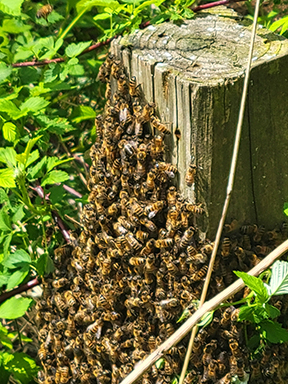We’ve been in the middle of a heat dome. The term “heat dome” is not a scientific term; it is more of a media creation, but it effectively describes these cycles of prolonged and high heat.
The term has only been around since the 2000’s and started being regularly used in 2011. The American Meteorological Society added the term to its glossary in 2022. The 2021 heat wave in the western US and Canada, brought the term heat dome into our day-to-day lingo.
A heat dome is a high-pressure system that traps hot air underneath it, leading to prolonged, dangerously high temperatures with little relief day or night. It can last days or even weeks.
A heat dome is analogous to placing a lid over a pot on the stove. The steam builds, the temperature rises, and everything inside gets hotter and hotter. That’s essentially what happens in the atmosphere during a heat dome. A high atmospheric pressure system traps hot air over a region, creating extremely high temperatures and humidity. This high-pressure system acts like a lid, keeping the warm air from dispersing.
The high pressure also causes the hot air to sink, increasing our discomfort. In the west, dry soil and sparse vegetation can create perfect conditions for heat dome systems to form and perpetuate.
Heat domes can last for several days or weeks. And because they block other weather systems from moving in and the jet stream is weaker, there’s often no rain to cool things down. An occasional thunderstorm is all the relief available, and it is only temporary.
What makes heat domes especially dangerous is that they prevent nighttime temperatures from falling. This lack of overnight relief can strain power grids, dry out vegetation, worsen droughts and take a serious toll on human health, especially in urban areas.
Climate change is creating more heat domes. Global warming is weakening the jet stream, leading to more persistent weather patterns that trap heat. Warmer ocean and land temperatures further amplify the effects of heat domes.
As our climate warms, heat domes are becoming stronger, more frequent and more persistent. The number of heat domes has nearly tripled since the 1950s.
So the sweltering continues…sigh.






